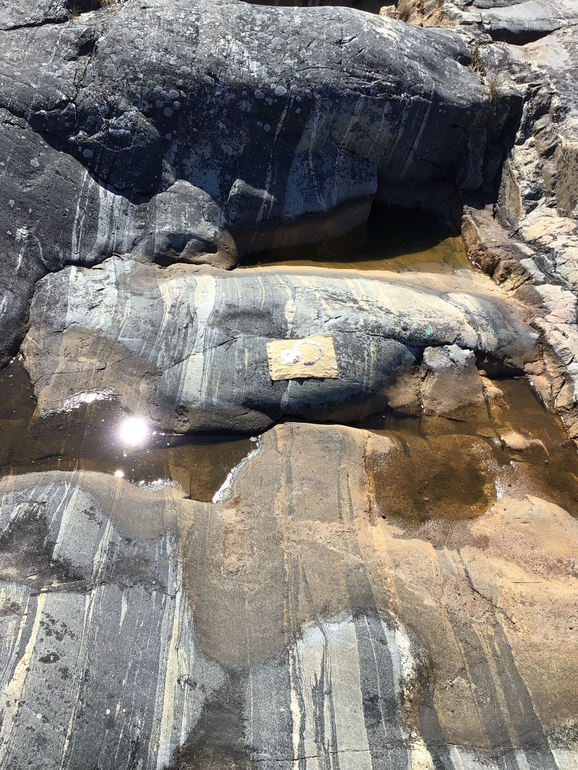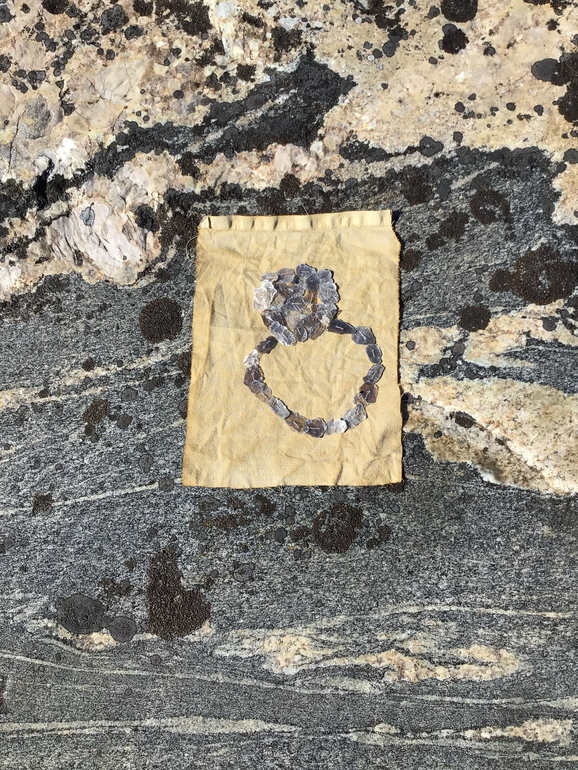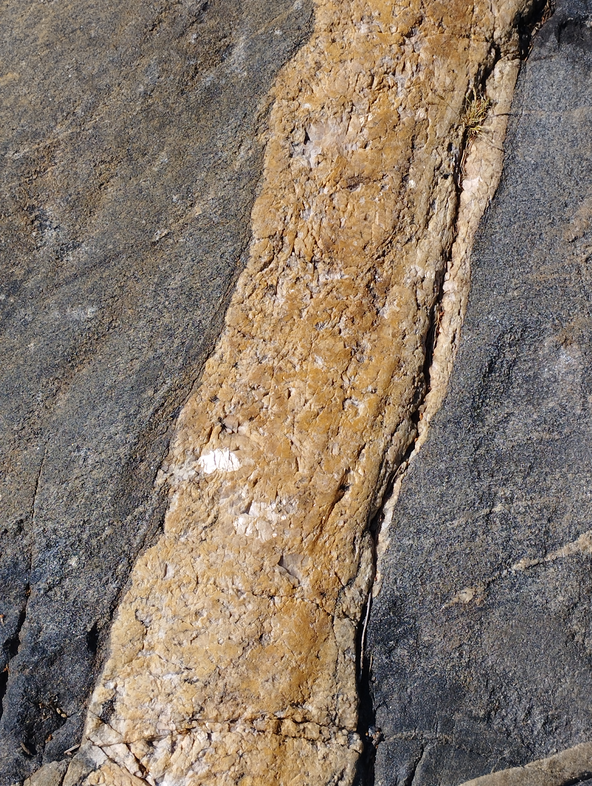During my walks on Björkö, I discovered many glimmery stones and an
unfamiliar material that caught my eye. Granit rocks in Sweden
are predominantly quartz-rich, which contains mica mineral. Human use
of mica dates to prehistoric times, with the earliest discover in cave
paintings from 40,000 BC to 10,000 BC as well as hand-carved pieces.
Mica is a versatile and fascinating mineral that has been used for
centuries in art and continues to be an important material in various
industries today, such as makeup products for its shimmering effect, in
electrical devices for its insulating properties, and in building materials
for its heat resistance.
Intrigued by its versatility, I decided to experiment with incorporating mica
into my art practice. Mica's unique properties, such as its shimmering
quality and thin layers, make it a fascinating material to incorporate it i.e.
into textile art. When sewing mica into fabric, I used different techniques
to attach the mica to the fabric securely. Among others, I used a strong
thread to sew the mica carefully onto the fabric, creating interesting
textures and visual effects. Since I have collected mica plates, I intend to
continue my research with it and to explore different stitching patterns
and designs.






